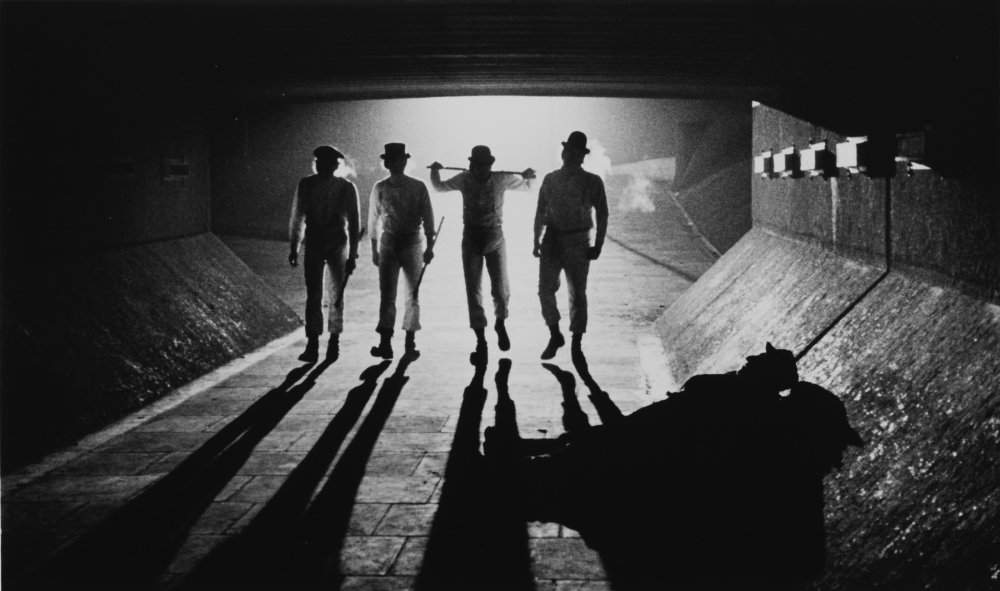Outstanding discovery in England: The Burgess Foundation in Manchester, the foundation that manages the legacy of the great writer Anthony Burgess (Harpurhey, 1917 - London, 1993), has announced that it has discovered an unpublished manuscript by the author containing philosophical musings that followed the release of the film A Clockwork Orange (“A Clockwork Orange” in the original language), Stanley Kubrick’s film adaptation of Burgess’s book of the same name, his best well-known (it tells the story of a teenager, Alex, who gathers a gang of boys, called “druggies,” to practice “ultraviolence” against unarmed victims, and ends up forcibly re-educated by the authorities). The script was written between 1972 and 1973 (Kubrick’s film is from 1971, while the book is from 1962).
The unfinished manuscript bears the title The Clockwork Condition ("The Clockwork Condition“) and is described by Burgess himself as a ”philosophical analysis of the contemporary human condition." in all likelihood the writing, in the 1970s, was in Burgess’s home in Bracciano, and arrived in England when the Lazio residence was sold after the writer’s death in 1993, and all the material took the road to Manchester where it was catalogued, but evidently the work that followed the film eluded those responsible for censoring the documents.
“This is an exciting discovery,” Professor Andrew Biswell, director of the Burgess Foundation and professor of modern literature at Manchester Metropolitan University, told the Guardian. Indeed, it is a very valuable document because, according to Biswell, Burgess spoke about The Clockwork Condition on only one occasion, in a 1975 interview, where he said he did not go beyond developing an idea. “Part philosophical reflection and part autobiography,” said Biswell, "The Clockwork Condition provides a context for Burgess’s most famous work, and amplifies his views on crime, punishment, and the possible corruptive effects of image culture. It also sheds new light on Burgess’s complicated relationship with his own novel A Clockwork Orange, a work he continued to revise until the end of his life."
The manuscript states that Burgess viewed the 1970s as a “mechanical hell,” with humanity “seeking an escape from the bland neutrality of the condition in which it finds itself,” and with human beings increasingly resembling machines. The manuscript also recounts how the expression A Clockwork Orange came about: Burgess, in 1945, was in a pub when he heard an octogenarian cockney (i.e., a native of London’s working-class neighborhoods) refer to an acquaintance of his as a person “as strange as a clockwork orange.” That expression, Burgess writes, “fascinated me because of its unlikely fusion of the popular with the surrealistic element. And for about twenty years I nurtured a desire to use it as the title of something. In those twenty years I happened to hear it other times (in subway stations, in pubs, in television plays), and always from old cockneys, never from young people. It was a kind of traditional trope, and he asked me to use it as the title of a work combining interest in tradition and quirky technique. The opportunity to use it came when I thought of writing a novel about brainwashing.” In fact, linguistics studies had already observed in the past that “being as strange as a mechanical orange” was once a much-used expression in London suburbia to refer to situations that appeared normal but concealed bizarre and unusual backgrounds.
We do not know why Burgess had left his writing unfinished: perhaps, Biswell speculates, he felt he did not have the skills to write a work of nonfiction, since he was a writer and not a philosopher. So he preferred to concentrate on an autobiographical novel, The Clockwork Testament, which was published in 1974 (and some of the themes covered in this work originate from The Clockwork Condition). It is not yet known whether it will be published: in theory, Biswell concludes, there is enough material to think about getting there, since the manuscript consists of 200 pages and in the drafts Burgess’s notes allow his ideas to be given a fairly definite shape.
Pictured: the four “druids” from A Clockwork Orange in a scene from Stanley Kubrick’s film.
 |
| A Clockwork Orange, unpublished Burgess manuscript discovered: contains reflections after Kubrick's film |
Warning: the translation into English of the original Italian article was created using automatic tools. We undertake to review all articles, but we do not guarantee the total absence of inaccuracies in the translation due to the program. You can find the original by clicking on the ITA button. If you find any mistake,please contact us.